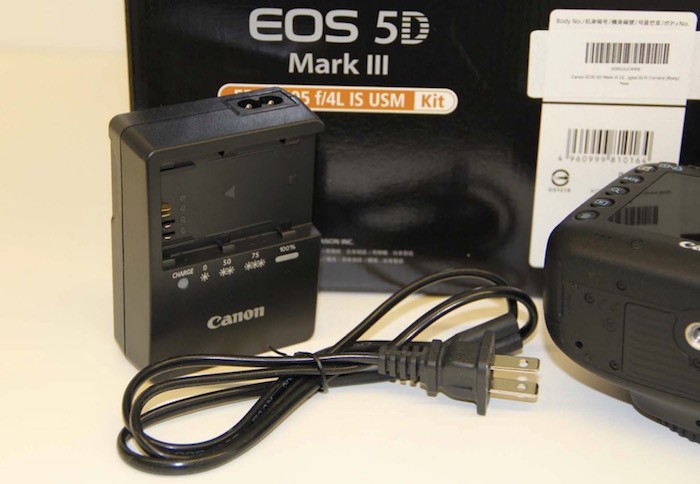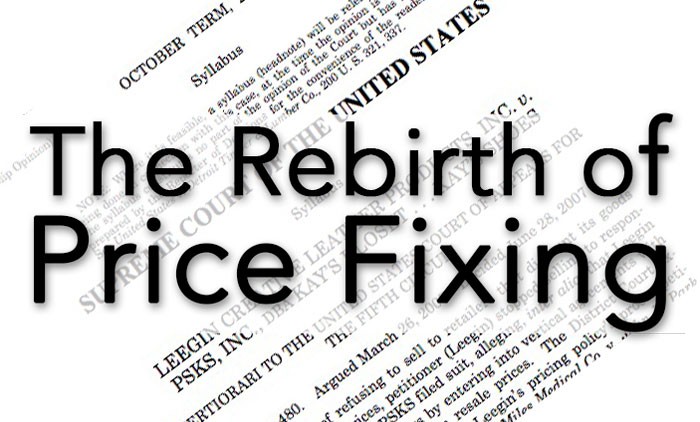
For years, we’ve been talking about deals on gray market cameras and we’ve now encountered some controversy among at least one major camera company and retailers offering gray market cameras for sale to consumers. So, I figured it was time to get more specific about what the term gray market means to us all as consumers. Specifically, I’ll be focusing on US consumers since that is the law with which I am familiar.
Additionally, this article will be updated on an ongoing basis with links out to the latest news on the Canon v. Gray Market Retailers series that I have been covering. If and when other manufacturers and retailers join in the controversy, that coverage will be referenced here as well. You can scroll to the bottom of this article for a timeline and links to those specific updates.
What is a Gray Market Camera?
A gray market camera is one that one that is sold through an unauthorized distribution channel.
For example, Canon USA, Inc. (an American company) is the exclusive authorized distributor of Canon, Inc. (a Japanese company) products in the United States. If a company in the US decides to buy Canon cameras from a Japanese retailer or distributor and import those cameras to the US for the purpose of selling them to consumers in the US, that company is using an unauthorized distribution channel – and those cameras are considered gray market cameras.
Legally speaking, the US Supreme Court has defined gray market products as follows:
“[a] gray market good is a foreign-manufactured good, bearing a valid United States trademark, that is imported without the consent of the U.S trademark holder.” K Mart Corp. v. Cartier, Inc., 486 U.S. 281, 285 (1988).
Additionally, cameras that are sold through authorized distribution channels in the US or elsewhere are certified to meet specific local codes and regulations (e.g., FCC, UL, etc.). Gray market cameras (and their accessories) may or may not meet these codes and regulations. Even if the products meet the standards, they likely have not been certified by the regulating agency.
Of course, this doesn’t apply to just cameras but can include lenses, phones, video game consoles and pretty much any other product that has exclusive distributors in the US. In our world of international trade and transport, it is not uncommon to find gray market products both online and at local retailers.
Note, however, gray market products are not the same as counterfeit products. The two types of products are commonly brought up in the same discussions. However, gray market products are very real, functioning and original products from a legitimate manufacturer. In many cases, the gray market cameras (or lenses and accessories) are manufactured in the same factories as the so-called “legitimate” counterpart being sold through the authorized channels. Counterfeit products, on the other hand, originate (at least, in part) somewhere other than the named manufacturers.
Additional reading:
- Canon USA’s Gray Market Page
- Nikon USA’s Gray Market Page
- Fujifilm USA’s Gray Market Page
- B&H Photo’s Gray Market Page
Are Gray Market Cameras Legal to Sell in the US?
Most of the time, the answer is yes . . . at least for now.
The nuances of the law around gray market cameras and other products is rooted in trademark law. Generally speaking, a gray market camera that is not materially different from a camera offered by an official distributor can be legally sold in the US. There are definitely exceptions to this general rule, many of which are being litigated today by Canon against certain gray market retailers. Additionally, the relationship between the foreign manufacturer and the independence of the US distributor plays a role in this issue, which is something we will hopefully see play out in the pending Canon litigation.
What are the Pros and Cons of Buying a Gray Market Camera?
Gray market cameras are often available at a lower price than an official camera from the US distributor, which is most likely the main attraction of buying a gray market camera. It is not uncommon to find a gray market camera for several hundred dollars less than a nearly identical official US model.
Gray market cameras may not allow you to obtain warranty service from the US distributor. In some cases, you may not be able to have the camera serviced at all by the US distributor’s service department.
Nikon USA is probably the most famous camera manufacturer who has taken a strong stance of refusing to service gray market Nikon cameras – regardless of the camera owner’s willingness to pay for repairs. This is a little more worrying since 2012 when Nikon cut off supplies of repair parts to facilities that are not specifically authorized by Nikon USA to perform repairs.
Historically, Canon USA has been more accommodating to US customers who have purchased gray market Canon cameras – even honoring the equivalent of a US warranty service. This is, of course, anecdotal evidence based on my reading of specific user interactions with Canon USA. If the camera is gray market, then Canon USA certainly has the right to refuse service. It is also noteworthy that Canon USA makes this a point of its damage caused by gray market retailers in its pending litigation.
Gray market cameras may not help you qualify for certain perks in professional brand memberships, such as CPS and NPS.

Gray Market Canon Battery Charger and non-UL Certified Cable
Gray market cameras may not include all of the localized accessories and manuals. In some cases, gray market retailers removed accessories like power cords and replace them with non-UL rated power cords and make photocopies of camera manuals.
Additionally, you may have to deal with missing or unauthorized software in the box with a gray market camera.

Canon 5D Mark III Counterfeit Serial Number Exhibit
Gray market cameras have been known to have altered or removed serial numbers on the camera bodies themselves. This can create problems with warranty service or service in general. I have no evidence but I also wonder about potential issues with insurance claims and stolen camera reports.

3rd Party Warranty for Gray Market Camera
The biggest concern for most consumers, however, is the warranty and post-warranty service. Some gray market dealers off an in-house warranty. Others suggest purchasing a third-party warranty from a reputable provider.
For many, the dollars saved up front are worth the risk of dealing dealing with a service headache at some point in the future.
What is MAP (Minimum Advertised Price) and What Does it Mean for Consumers?

In 2007, the US Supreme Court ruled in Leegin v. PSKS that the century-old antitrust rule prohibiting manufacturers and distributors from setting minimum retail prices was no longer the law of the land.
In doing so, the Supreme Court ignored nearly a century of holdings that barred vertical price fixing as a bright-line rule and per se illegal. The Court reasoned the validity of allowing minimum price agreements by asserting that MAP policies give retailers more opportunity to invest in better customer service without fear of being undercut by discount rivals. Additionally, the Court suggested that companies can introduce new products to the market with MAP “restrictions in order to induce competent and aggressive retailers to make the kind of investment of capital and labor that is often required in the distribution of products unknown to the consumer.”
And thus, Minimum Advertised Pricing policies were established as legal vehicles to bolster the profits of corporations, which were provided a roadmap for doing so by the Supreme Court. The Court’s speculative economic justification for changing the legal thresholds for vertical price fixing is borderline asinine. This is a big-business versus consumer issue from the start – and big-business won.
In his dissenting opinion, Justice Breyer wrote:
“[T]he fact that a rule of law has become “embedded” in our “national culture” argues strongly against overruling. The per se rule forbidding minimum resale price maintenance agreements has long been “embedded” in the law of antitrust. It involves price, the economy’s “‘central nervous system.’” It reflects a basic antitrust assumption (that consumers often prefer lower prices to more service). It embodies a basic antitrust objective (providing consumers with a free choice about such matters). And it creates an easily administered and enforceable bright line, “Do not agree about price,” that businesses as well as lawyers have long understood.” (emphasis added and citations omitted).
Virtually every major camera manufacturer has adopted its own MAP policy and incorporates those terms in vending agreements with its authorized resellers. Canon USA notoriously began strict enforcement of its MAP policy in the US in November 2014 – just before the holiday rush.
MAP policies in the camera industry have been bad for consumers’ wallets. Prices have gone up across the board and discounts outside of authorized promotions by manufacturers/distributors are rare. The saving grace in combatting the manufacturer-friendly MAP policies has been the gray market retail industry.
Several gray market retailers have established a position of providing good customer service and discount prices at scale. Gray market camera retailers have been around for decades; however, the volume of gray market cameras sold has probably never been as high as it is today.
While the global reach of online retailers has a lot to do with the prominence of gray market sales, Canon, Nikon and other manufacturers’ strict enforcement of MAP policies can’t be ignored as we watch gray market sales continue to grow.
Updates on Gray Market Disputes
The legal issues surrounding gray market camera sales came to the forefront for me in November 2015, at which time I first published news about Canon’s lawsuits against Get It Digital, LLC and F & E Trading, LLC. Both companies operate several online and ebay stores wherein they offer gray market cameras and other products for sale at discounted prices. You can keep up the ongoing saga below.
The articles below are listed from the oldest first with newer updates appearing at the bottom of the list.
- Canon is Suing “Get It Digital” and Others to Stop Gray Market DSLR Sales (Nov. 2015)
- Canon v. Gray Market Retailers Update (Dec. 2015)
- Canon v. Gray Market Retailers: Get It Digital Responds (Dec. 2015)
- Canon v. Gray Market Retailers: F & E Trading, LLC Responds (Jan. 2016)
- Canon v. Gray Market Retailers Update: The Real “F&E Trading” Responds (Feb. 2016)
- Gray Market War (Olympus Settlement): Is the Writing on the Wall? (Feb. 2016)
- Canon v. Gray Market Retailers Update: Motion to Dismiss (Mar. 2016)
- Canon v. Gray Market Retailers: One Settled & One Grinding Toward Trial (Nov. 2018)


Good overview. Cheers!
i love grey market, the price is so low that you can buy 2 pieces at the price of 1
Being the Company in my opinion that produces the best digital cameras in the World I think that Canon should re-think their strategy regarding prices and Price fixing. Price fixing is ellegal in the EU but it still continues unrestricted. Canon have tried to get round this law by giving the consumer Cash back deals on some of their products when purchased from authorized Canon dealers. Competative pricing would be more fair and allow the individual camera store to compete with others.
Providing the equipment is original and not a cheap copy I think that grey market imports are good buisness and help to boost the sales of Canon products.
I do not even know the way I ended up right here, however I assumed this put up was once great.
I do not know who you mighbt be but definitely you are going to a
famous blogger should you arre not already. Cheers!